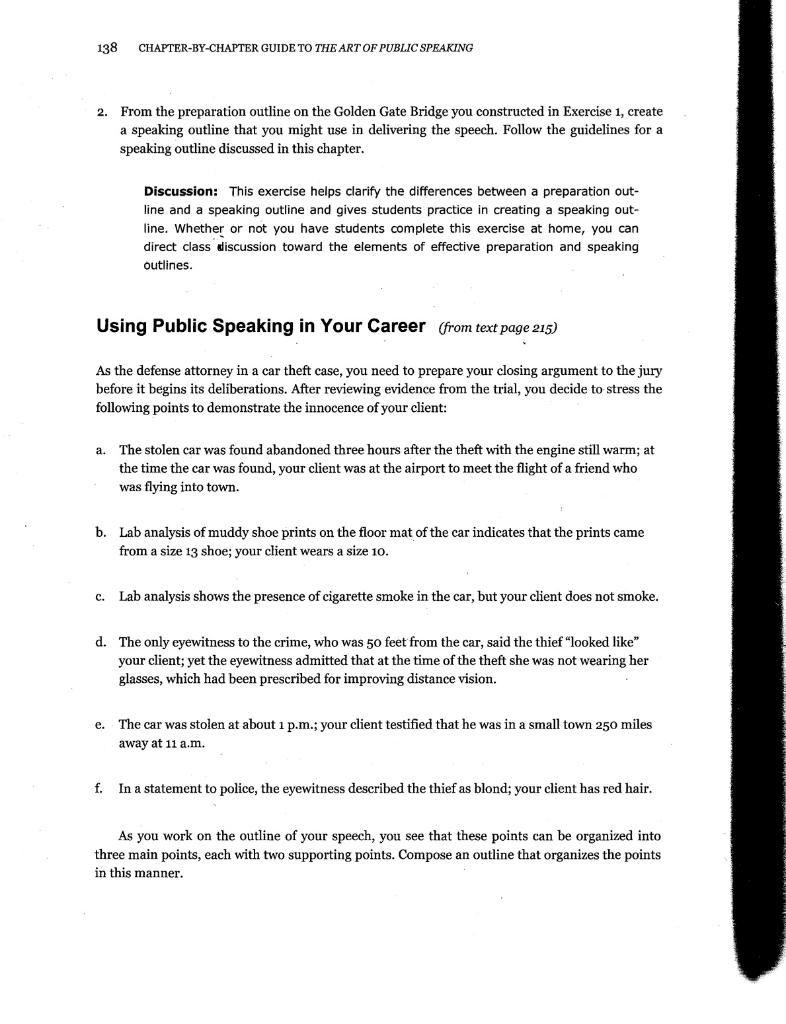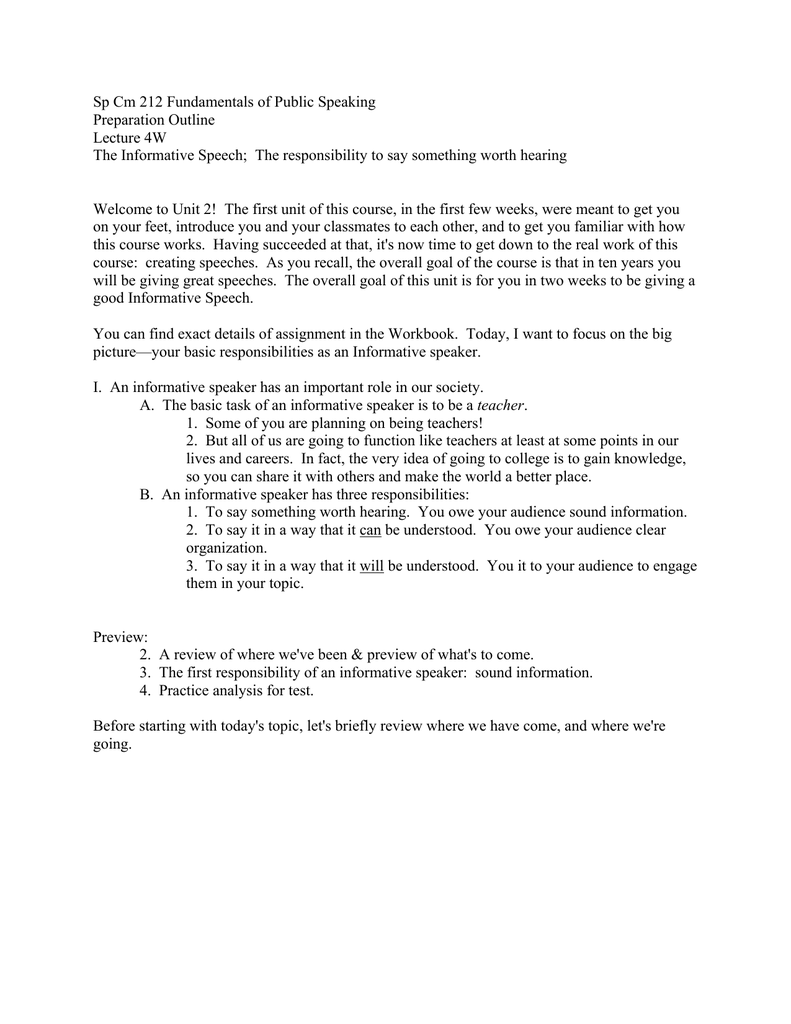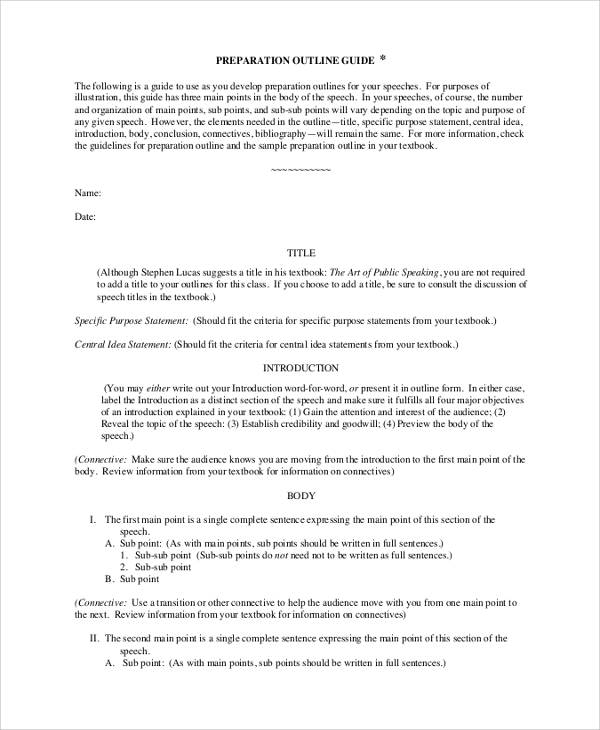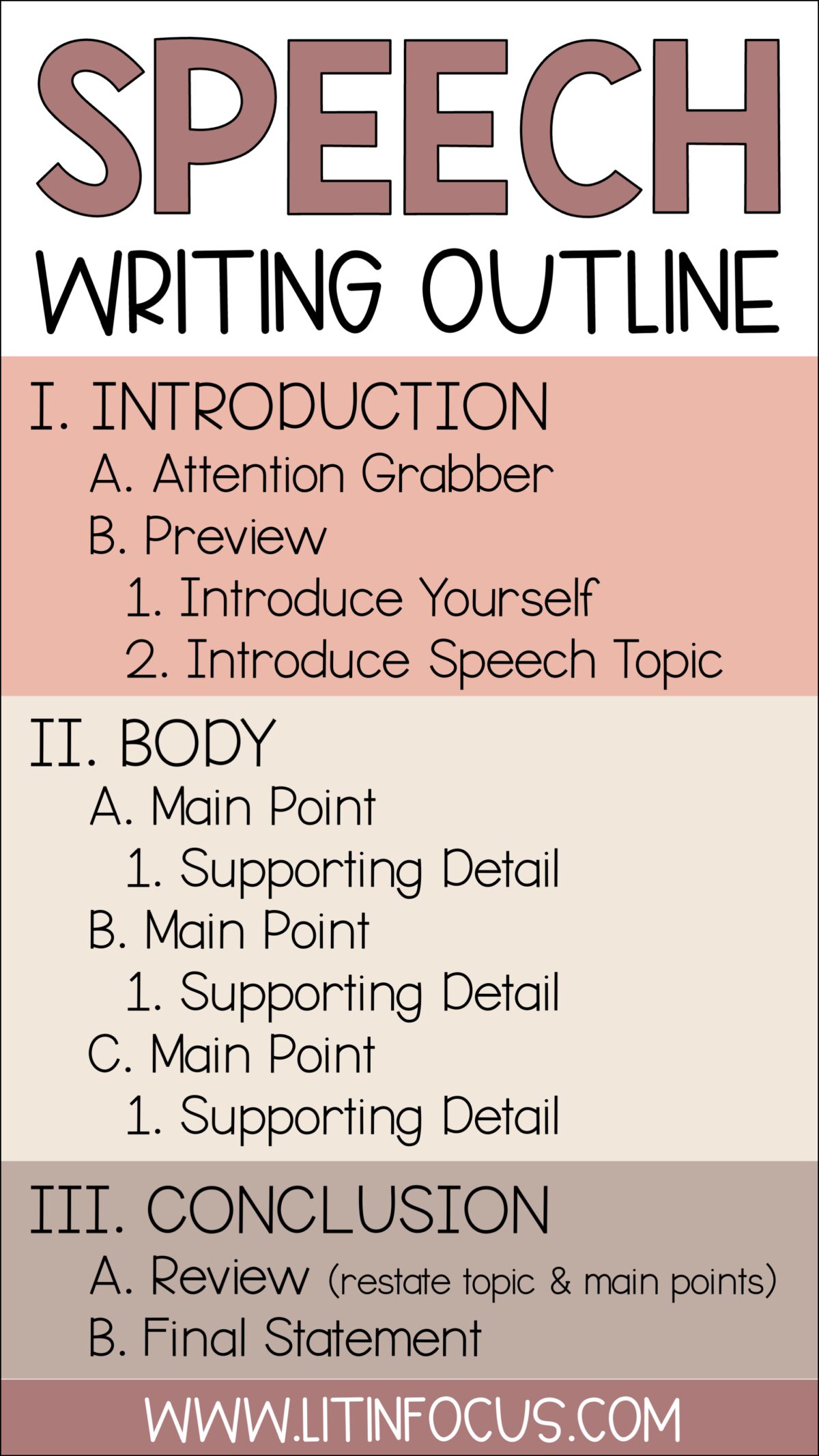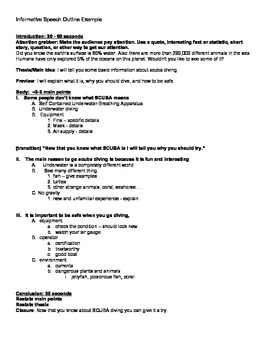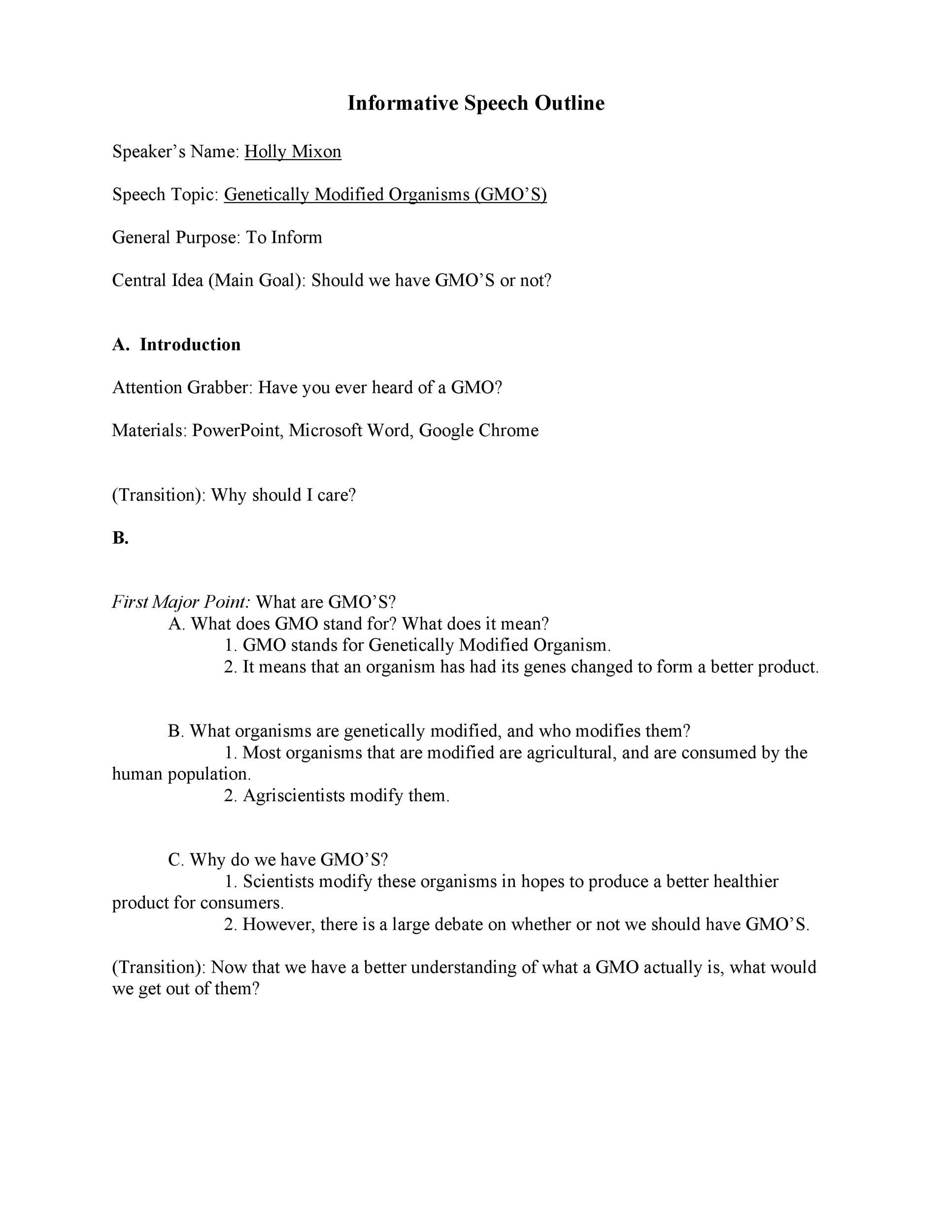Public speaking is a valuable skill that can help you in many areas of your life, from presenting ideas at work to giving a wedding toast. However, it can be intimidating to stand up in front of a group and speak, especially if you are not prepared. That's where a public speaking outline comes in.
A public speaking outline is a roadmap for your speech. It helps you organize your thoughts and present them in a logical and coherent manner. An outline can also help you stay on track and avoid rambling or going off on tangents.
There are many ways to structure a public speaking outline, but one common method is to use the three-part structure of introduction, body, and conclusion.
The introduction is the first part of your speech and should grab the audience's attention. You can start with a joke, a story, or a shocking statistic. Whatever you choose, make sure it's relevant to your topic and will set the tone for the rest of your speech.
The body of your speech is where you present the main points of your message. This is the longest part of your speech and should be organized into clear and logical sections. Each section should have a main idea that you support with evidence or examples.
The conclusion is the last part of your speech and should summarize the main points of your message. You can also include a call to action or a memorable quote or statistic to drive your message home.
In addition to the three-part structure, there are a few other things to consider when creating a public speaking outline:
Use headings and subheadings to make your outline easy to read and follow.
Use transitional phrases to move from one point to the next. This will help your speech flow smoothly and keep the audience engaged.
Practice your speech with your outline before you deliver it. This will help you feel more confident and ensure that your message is clear and concise.
In conclusion, a public speaking outline is an important tool that can help you deliver a well-organized and effective speech. By following the three-part structure and considering the tips mentioned above, you can create an outline that will help you confidently and effectively communicate your message to your audience.
